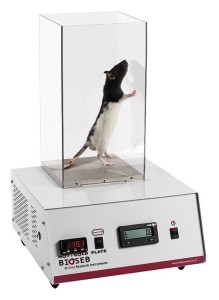Authors
V. Matos-Cruz, E.R. Schneider, M. Mastrotto, D.K. Merriman, S.N. Bagriantsev, E.O. Gracheva
Lab
Yale University School of Medicine, New Haven, Connecticut, USA
Journal
Cell Reports
Abstract
Thirteen-lined ground squirrels and Syrian hamsters are known for their ability to withstand cold during hibernation. We found that hibernators exhibit cold tolerance even in the active state. Imaging and electrophysiology of squirrel somatosensory neurons reveal a decrease in cold sensitivity of TRPM8-expressing cells. Characterization of squirrel and hamster TRPM8 showed that the channels are chemically activated but exhibit poor activation by cold. Cold sensitivity can be re-introduced into squirrel and hamster TRPM8 by transferring the transmembrane domain from the cold sensitive rat ortholog. The same can be achieved in squirrel TRPM8 by mutating only six amino acids. Reciprocal mutations suppress cold sensitivity of the rat ortholog, supporting functional significance of these residues. Our results suggest that ground squirrels and hamsters exhibit reduced cold sensitivity, partially due to modifications in the transmembrane domain of TRPM8. Our study reveals molecular adaptations that accompany cold tolerance in two species of mammalian hibernators.
BIOSEB Instruments Used
Cold Hot Plate Test (BIO-CHP)
Source :
http://www.cell.com/cell-reports/fulltext/S2211-1247(17)31750-3

 Pain - Thermal Allodynia / Hyperalgesia
Pain - Thermal Allodynia / Hyperalgesia Pain - Spontaneous Pain - Postural Deficit
Pain - Spontaneous Pain - Postural Deficit Pain - Mechanical Allodynia / Hyperalgesia
Pain - Mechanical Allodynia / Hyperalgesia Learning/Memory - Attention - Addiction
Learning/Memory - Attention - Addiction Physiology & Respiratory Research
Physiology & Respiratory Research











![Dynamic Weight Bearing 2.0 – Postural Module [Add-on]](https://bioseb.com/733-home_default/dynamic-weight-bearing-20-add-on-postural-module.jpg)
























 Pain
Pain Central Nervous System (CNS)
Central Nervous System (CNS) Neurodegeneration
Neurodegeneration Sensory system
Sensory system Motor control
Motor control Mood Disorders
Mood Disorders Other disorders
Other disorders Muscular system
Muscular system Joints
Joints Metabolism
Metabolism Cross-disciplinary subjects
Cross-disciplinary subjects CONFERENCES & MEETINGS
CONFERENCES & MEETINGS 